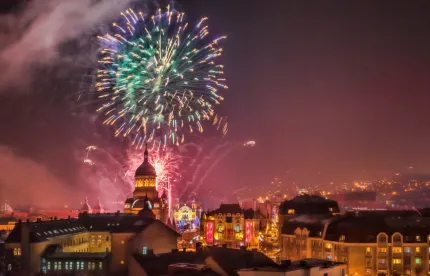On July 4, PBS-affiliated television stations nationwide purported to show live fireworks from the Mall in Washington, DC, without directly informing viewers that they were instead showing “a combination of the best fireworks from this year and previous years. It was the patriotic thing to do” (PBS twitter posting @July4thPBS – 9:28 PM – 4 Jul 2016). This is possibly a violation of Section 73.1208 of the FCC’s rules.
Section 73.1208 of the FCC’s rules requires that “[a]ny taped, filmed or recorded program material in which time is of special significance, or by which an affirmative attempt is made to create the impression that it is occurring simultaneously with the broadcast, shall be announced at the beginning as taped, filmed or recorded.”
The FCC rule goes on to caution that “[t]he language of the announcement shall be clear and in terms commonly understood by the public. For television stations, the announcement may be made visually or aurally.” The rule excludes “[t]aped, filmed, or recorded announcements which are of a commercial, promotional or public service nature [which] need not be identified as taped, filmed or recorded.”
PBS informed viewers through its twitter account in advance of the broadcast that its “36th annual broadcast, sponsored by Boeing, will air live on @PBS Monday, July 4, 2016 at 8 p.m. ET. (emphasis added).” Since re-broadcasting a previous year’s fireworks display is not a “live” broadcast, PBS had an apparent duty under the FCC’s rules to explain the non-live nature of the fireworks shown at the beginning of the broadcast.
Following the broadcast, PBS tweeted that “[b]ecause this year’s fireworks were difficult to see due to the weather, we made the decision to intercut fireworks footage from previous A Capitol Fourth concerts for the best possible television viewing experience. We apologize for any confusion this may have caused.”
While PBS may have tried to cast the issue of showing a previous year’s fireworks display as live in a better light by characterizing its decision as “the best possible television viewing experience” it was not, as PBS suggests, merely “confusing.” Rather, PBS apparently failed to give proper notice to the viewing public, and therefore its broadcast likely did not comport with FCC rules.
This is not the first time that a television station has apparently misled viewers with videos of fireworks. WBZ-TV in 2011 reportedly showed Boston fireworks over some of the city’s most famous monuments, including Fenway Park and Quincy Market, even though such location shots were a physical impossibility. WBZ-TV defended its broadcast by stating that the show was entertainment, not news, and no different than Boston Legal — a show filmed in Los Angeles — that showed footage of Boston scenes in every episode. A produced television series that is not promoted as “live” is fundamentally different, however, from a date-specific broadcast of a current event that is promoted as “live.”
While it is rare for the FCC to enforce its rule requiring notice of pre-recorded programming that appears to be live to be revealed as such, the rule remains on the books. But, before we laugh too much at the challenges of presenting a TV broadcast of fireworks during fog, radio stations need to recall that much recent radio programming practice also arguably violates Section 73.1208. Most voice‑tracked stations never announce their programming as “earlier recorded.” This issue was noted over a decade ago in which interviews recorded in another market were produced to make them sound as if occurring live and locally.
It has been decades since a Section 73.1208 rule violation has come before the FCC. In a 1993 license renewal hearing, KPRL, Paso Robles, California, was accused that certain traffic reports, rather than being live as announced, were pre-recorded. The FCC was found that during a two-week period the traffic reporter phoned in pre-recorded traffic reports from his home to avoid getting up early. The FCC admonished the station for the violation.
In 1992, WMBO, Auburn, NY, was fined $5,000 under Section 73.1208 for its news teasers, broadcast five minutes before pre-recorded newscasts each afternoon. The FCC found that the teasers were misleading so as to create the impression that the news was going to be presented live. The FCC stated that previewing a pre-recorded newscast with the words “[h]ere are the stories we’re working on for the top of the hour” constituted an affirmative attempt to create the impression of a live broadcast. The FCC noted it was not faulting WMBO for presenting taped newscasts. Rather, the FCC noted that the rule simply requires that when material is taped, the public should not be misled into thinking otherwise.
In the view of some, it is a trivial matter that a TV network decided to enhance the visuals presented to its nationwide audience showing the DC air as clear when in fact the Washington Monument was enshrouded in fog. After all, when has anything in Washington been crystal-clear? If a fireworks broadcast was enhanced a little without telling anyone, what’s the issue?
Nonetheless, broadcasters have an ethical responsibility to fairly and accurately present events purporting to be “live.” The PBS self-described “intercut footage” from a previous fireworks display broadcast as live falls short of this standard. This is an opportunity to remind broadcasters that programming promoted as “live” should actually present events more-or-less as they are occurring.
This article originally was published at RadioInk.com.



 />i
/>i

